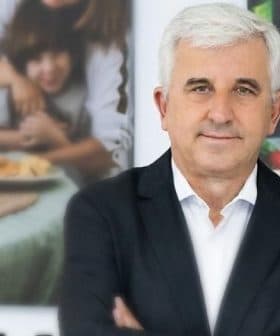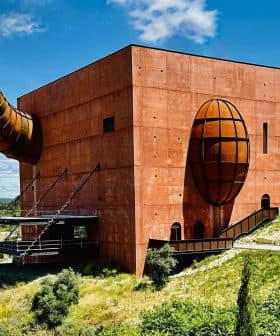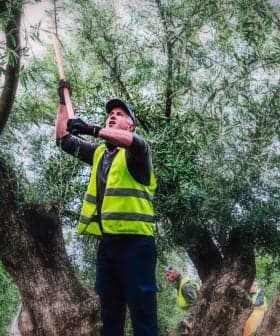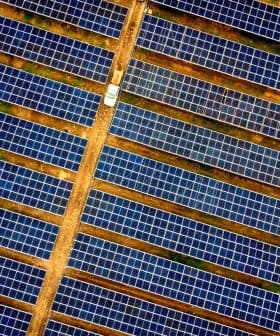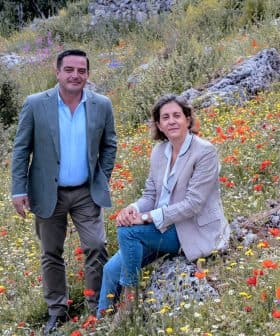Farmers Battle Xylella Outbreak on Mallorca
Wrenching decisions on how to eradicate the disease are confronting islanders as they imagine a landscape without vegetation. The spread of the disease to mainland Spain is seen as inevitable.
 Mallorca, Spain
Mallorca, SpainXylella fastidiosa, a deadly bacterium for olive trees, has rapidly spread to over 400 cases in the Balearic Islands since its first detection in Mallorca in 2016. The European Union’s eradication plan, which involves eliminating all vegetation within a 100-meter radius around infected plants, has caused concerns among local authorities and farmers due to the potential devastation of the islands’ vegetation.
In November 2016, the first case of Xylella fastidiosa was confirmed in Mallorca. Less than one year later, more than 400 cases have been reported along the Balearic Islands.
And the number of infected trees grows at a rate of 40 every week, according to the authorities of the Spanish Mediterranean archipelago.
In all of Italy, which is 10 times the size of the Balearic Islands, they have found just one kind of Xylella in five years. We have found five strains in six months.
Xylella fastidiosa is a bacterium affecting a number of plants, including some fruit trees, but it has been in the spotlight for being deadly for olive trees.
It causes the so called “olive quick decline syndrome,” a disease that has a drying effect on trees and leads them to a rapid death. Some media in Spain have dubbed it the “Ebola of the olive tree.”
After having affected more than one million specimens in the South of Italy and Corsica, the arrival of the plague in Spain — the main producer of olive oil in the world — was seen as a matter of time.
Now, in the Balearic Islands, on top of the fears sparked by the disease, local authorities and farmers are also worried about the eradication plan pushed by the European Union, which comprises the total elimination of vegetation within a radius of 100 meters (328 feet) around any infected plant.
The EU’s protocol also prevents new trees to be planted before it has been proved that the area has been bacteria free for at least five years.
If applied by the book, those measures would virtually destroy a big part of the Balearic Island’s vegetation.
“These eradication actions are difficult to implement. We try, but we have 400 infection areas. And we have to eliminate all vegetal life in a 100 radius around them. This means burning it all. Just imagine in terms of area what we are talking about. And it is increasing,” Omar Beidas, section chief officer of Plant Health at the Balearic Government told Olive Oil Times.
“As it has happened in Italy and Corsica, we are also having problems strictly implementing the European decision. It would mean to devastate the islands. Because this is happening everywhere: in woodlands, croplands, urban areas… If you find a case in a pot in the city of Palma, you have to implement the very same protocol. We are talking about any kind of plants: from olive trees to rosemary,” he explained.
The Xylella fastidiosa bacterium not only affects olive trees. It can be hosted by almost 400 species of plants. So far, in the Balearic Islands, it has been detected in fifteen of them.
“We have found the bacteria in wild olive trees, olive trees, almond trees, prune trees, cherry trees, rosemary, oleanders, grape vines, fig trees…” Beidas pointed out.
“It is important to highlight the hugely genetically diverse bacteria we have here. In all of Italy, which is 10 times the size of the Balearic Islands, they have found just one kind of Xylella in five years. We have found five strains in six months,” he added.
When asked what alternatives there are to stop the disease instead of eliminating all vegetation around infected specimens, the expert suggested a contention plan rather than an eradication one: a set of measures that would allow local authorities to eliminate not all but only certain plants.
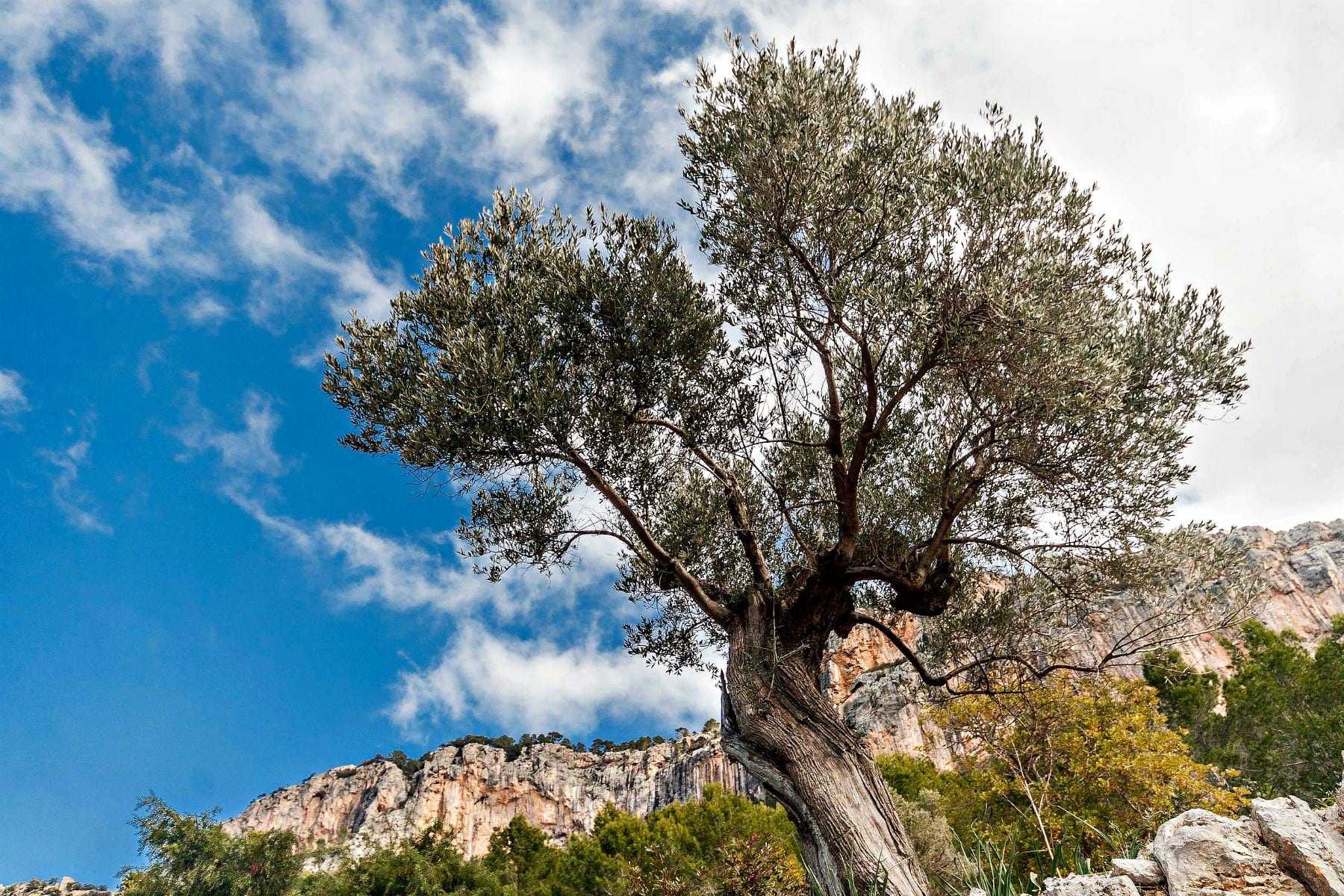
The Balearic regional government has already asked the Spanish government and the EU to change the protocol to allow this less drastic approach.
“That would allow us a bit more margin to work. But this won’t happen until mid-2018. The EU doesn’t grant contention plans until you can prove that you have tried eradication unsuccessfully for two years,” Beidas said.
Although the disease has spread throughout all three main Balearic Islands, the gravity of the situation varies from one to another.
In Mallorca, as Beidas pointed out, most of the 50 – 60 detected cases in olive trees belong to a subspecies of the Xylella fastidiosa called Multiplex, a strain that does not kill the trees. Thus, the efforts to eradicate it from this island are focused on almond trees, worse hit by the bacteria.
Farmers on the largest and most populated island of this Mediterranean archipelago are worried about the advance of the disease.
“The situation is no doubt worsening. We demand the authorities to get together with the representatives of the agricultural sector, as we are the most damaged ones, to discuss the situation so they can confirm that it is as bad as we are seeing,” said Gabriel Biel, general secretary of the Farmers Union (Unió de Pagesos) of Mallorca.
“We need to implement protection mechanisms: what can we do in order to stop the disease and cure the trees and what preventive actions we must take. It is also important to know how many trees we need to uproot and how. We don’t know that yet. We sit altogether to draw solutions,” he told Olive Oil Times.
Compared to Mallorca, the situation in Ibiza, the second most populated island, is much more dramatic.
“The strain in Ibiza has been able to move forward very quickly and, even centenary or millenary olive trees have been devastated and have died,” Beidas said.
Although there is a ban of any vegetal material to go out of the Balearic Islands since the beginning of 2017 in order to prevent the spread of the bacteria, the first cases of Xylella fastidiosa were already detected in July in almond trees in the Valencia region, in Eastern Spain.
The jump from the islands to the Spanish mainland is regarded as “inevitable.”


